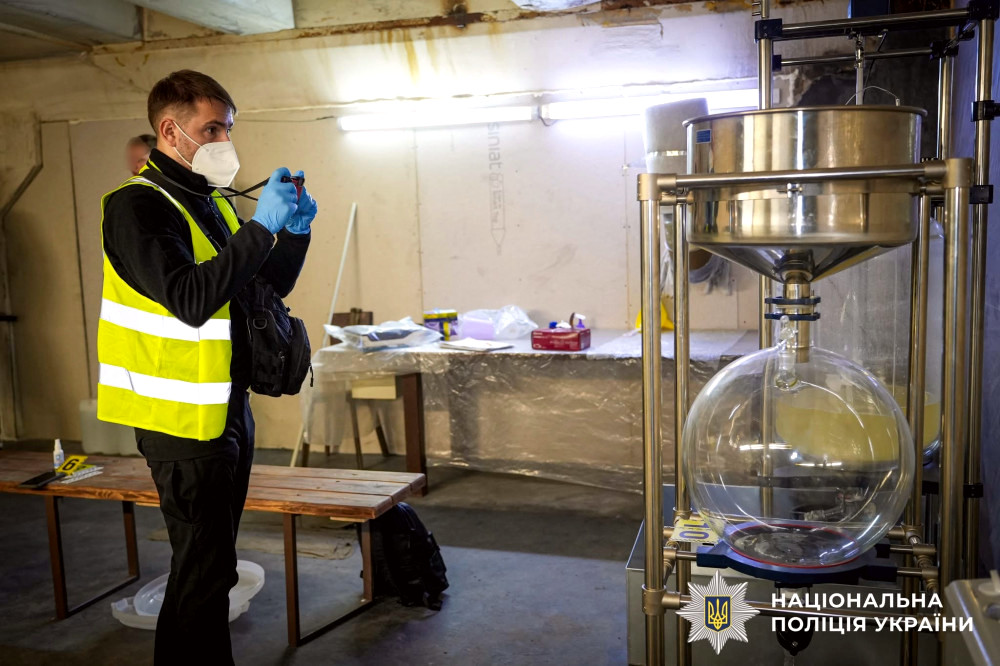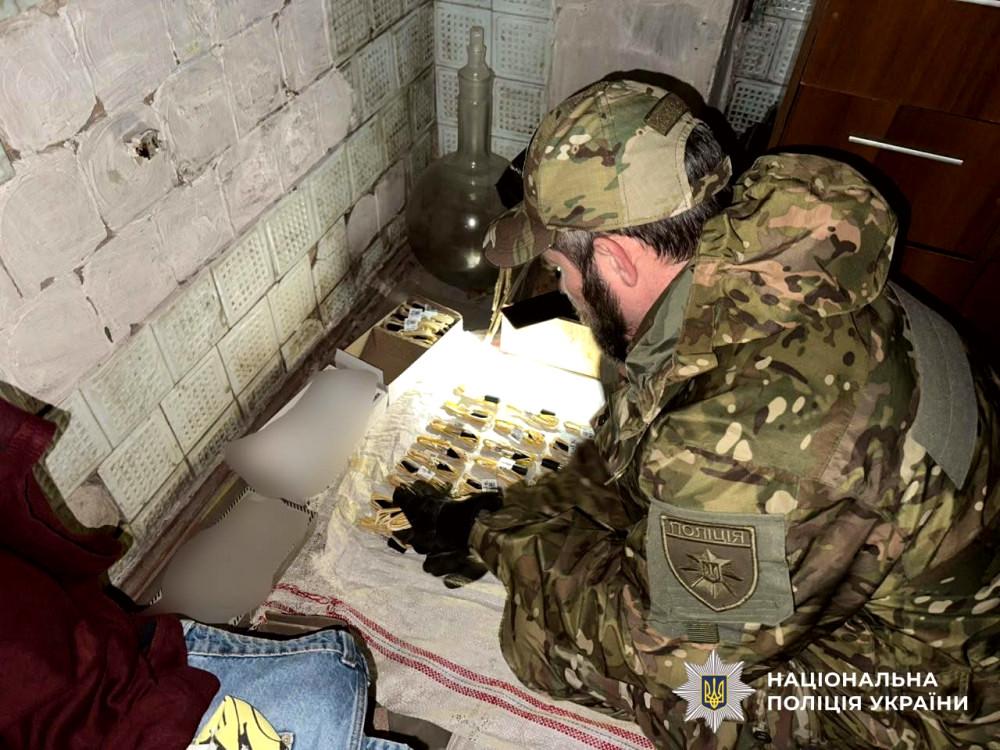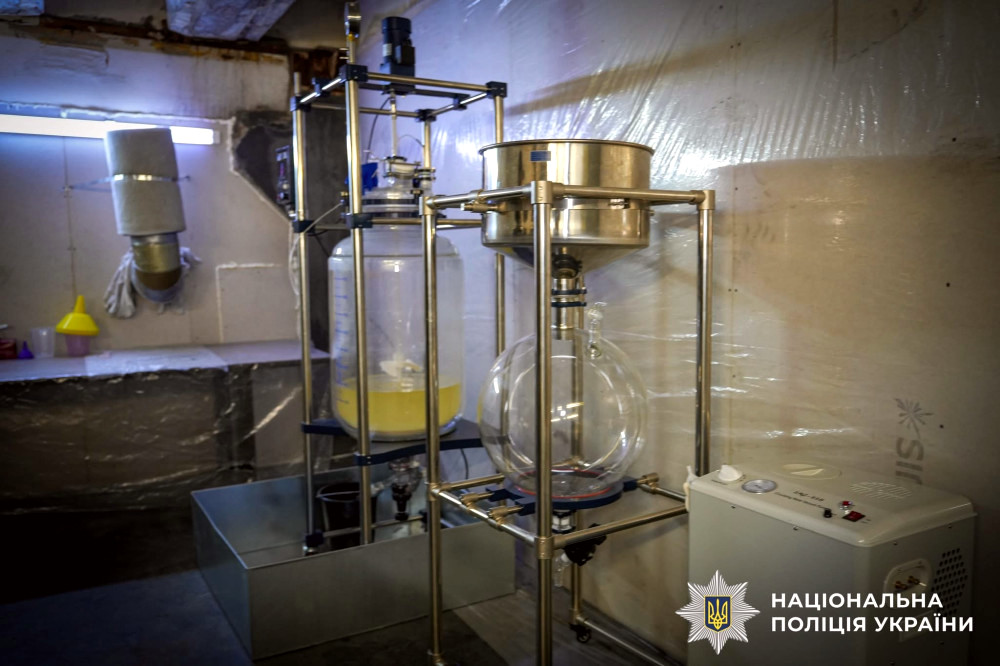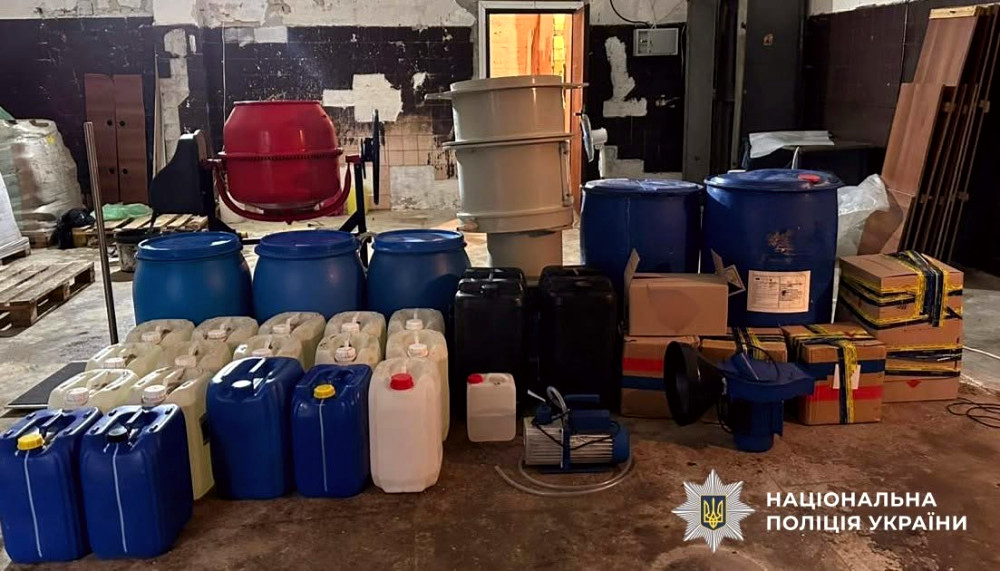During the conducted raids, two drug laboratories and three precursor warehouses were discovered and neutralized. Law enforcement seized 44 explosive units, 30 kg of salts, and over 5,000 liters of precursors.
The criminal organization operated like an industrial enterprise: it had its own production of salts and amphetamines, a quality control system, accounting, and logistics. Utilizing modern technology, postal services, and encrypted communication channels, the participants concealed their precursor warehouses and two fully equipped drug laboratories in storage facilities, producing more than 15 kg of psychotropics per month.
The organization had a clear structure and a well-established communication system. The group consisted of thirteen members from Kherson, Odesa, Dnipropetrovsk, Kyiv, and Khmelnytskyi regions. Two participants, operating in Ukraine, fully established all technological processes, following instructions from an unidentified organizer with a Russian phone number who coordinated their activities remotely via messenger.
Each member of the group had specific roles. Some were involved in the manufacturing and packaging of psychotropic substances, others supplied precursors and equipment, while others organized transportation, and some group members were responsible for storage, sales, and financial transactions.
The organizers taught the executors not only to confidentially package and ship the finished "goods" but also to produce it independently according to detailed technological instructions. They possessed specialized knowledge in chemistry or used professional advice from open sources, which allowed them to improve the production process. Coordination among participants was conducted through the Telegram messenger, where law enforcement documented numerous chats detailing the technology of production, packaging, storage, and shipment of finished batches to clients. Each batch was personally monitored by the organizers - the criminals' correspondence preserved photo reports, weight indicators, and shipment confirmations. Psychotropics were distributed via delivery services. To disguise shipments in postal receipts, they were marked as household goods. Participants used fictitious personal data to receive such packages. Investigators from the Main Investigation Department of the National Police, with operational support from the Department for Combating Drug-Related Crime and the Security Service of Ukraine, conducted searches at the homes of the suspects, in warehouses, and in the laboratory, during which they seized laboratory equipment, reactors, 44 explosive units, 700 liters of chemical compounds for producing psychotropics, 5,000 liters of precursors, 30 kg of alpha-PVP salts, and other physical evidence. All members of the organized group have been suspected of illegal manufacturing, storage, and distribution of psychotropic substances committed by an organized group (Part 1 of Article 255, Part 2 of Article 255, Part 3 of Article 307, Part 3 of Article 311, Part 4 of Article 28, Part 2 of Article 317) of the Criminal Code of Ukraine. They face up to twelve years of imprisonment with confiscation of property. The pre-trial investigation is ongoing. Law enforcement is identifying the organizer with a Russian phone number who coordinated the drug syndicate's activities. The procedural guidance is conducted by the Office of the Prosecutor General.



